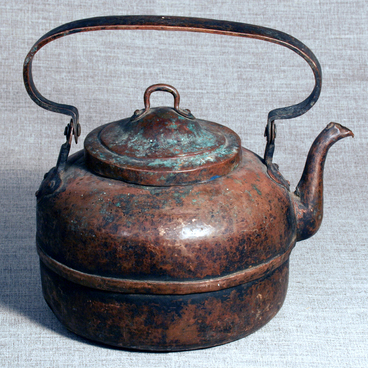The Forest Nenets inhabit the North of the Western Siberia, the territory with harsh climate, piercing wind and outdoor temperature that may drop below –50°С in winter. One needs warm and windproof clothing and footwear to stay outside and carry out traditional householding activities.
Traditional Forest Nenets’ outfit is made of processed reindeer skin and fur. These materials are durable and protect from frost perfectly. Only women sew clothes for the whole family, moreover, they dress leather and make threads out of reindeer tendon themselves.
The Forest NEnets people have mastered the technology of skin processing for centuries, as this is a complicated and arduous task. Usually it’s done in summer, when it’s easy to dry skins putting them in the open air outside a chum. To process a skin for fur, one scrubs only subcutaneous tissue out of the inner side and to make leather or suede (rovduga), the outer layer with fur is also cleaned. After initial preparation the skin is placed on special wooden boards for processing. These boards are usually made of pine. Just as scrapers and other household tools they are made by men. Skins processing is a woman’s duty.
A woman sits on a wooden log, the board with the skin set in front of her so that its narrow end comes down to the ground. With her two hands she takes a scraper with a broad blade and powerfully scrubs out the subcutaneous layer. At the same time the material is being mashed and stretched. As a rule, it takes a day to process one skin.
Such boards are also used for cutting fur and cloth ornaments. Complicated patterns are not only decorative but also have a great symbolical meaning. The traditional mosaic ornaments reflect clearly the Forest Nenets’ culture, outlook and lifestyle.
The board displayed at the Gubkinsky Museum of the Development of the North exposition is provided by the Forest Nenets Khovku Pyak, a Dyanki-Koy camp resident.
Traditional Forest Nenets’ outfit is made of processed reindeer skin and fur. These materials are durable and protect from frost perfectly. Only women sew clothes for the whole family, moreover, they dress leather and make threads out of reindeer tendon themselves.
The Forest NEnets people have mastered the technology of skin processing for centuries, as this is a complicated and arduous task. Usually it’s done in summer, when it’s easy to dry skins putting them in the open air outside a chum. To process a skin for fur, one scrubs only subcutaneous tissue out of the inner side and to make leather or suede (rovduga), the outer layer with fur is also cleaned. After initial preparation the skin is placed on special wooden boards for processing. These boards are usually made of pine. Just as scrapers and other household tools they are made by men. Skins processing is a woman’s duty.
A woman sits on a wooden log, the board with the skin set in front of her so that its narrow end comes down to the ground. With her two hands she takes a scraper with a broad blade and powerfully scrubs out the subcutaneous layer. At the same time the material is being mashed and stretched. As a rule, it takes a day to process one skin.
Such boards are also used for cutting fur and cloth ornaments. Complicated patterns are not only decorative but also have a great symbolical meaning. The traditional mosaic ornaments reflect clearly the Forest Nenets’ culture, outlook and lifestyle.
The board displayed at the Gubkinsky Museum of the Development of the North exposition is provided by the Forest Nenets Khovku Pyak, a Dyanki-Koy camp resident.




